I entered my 40s unable to describe my taste in music. Up until recently I was unable to answer a simple question;
“What music do you listen to?”
In this post I look back at some of the experiments I’ve done in order to develop, or at least understand, my taste in music. It’s a long one so if you don’t make it to the end, I’d love some help building my collection. Send me an album recommendation accompanied by a short story of what the album means to you.
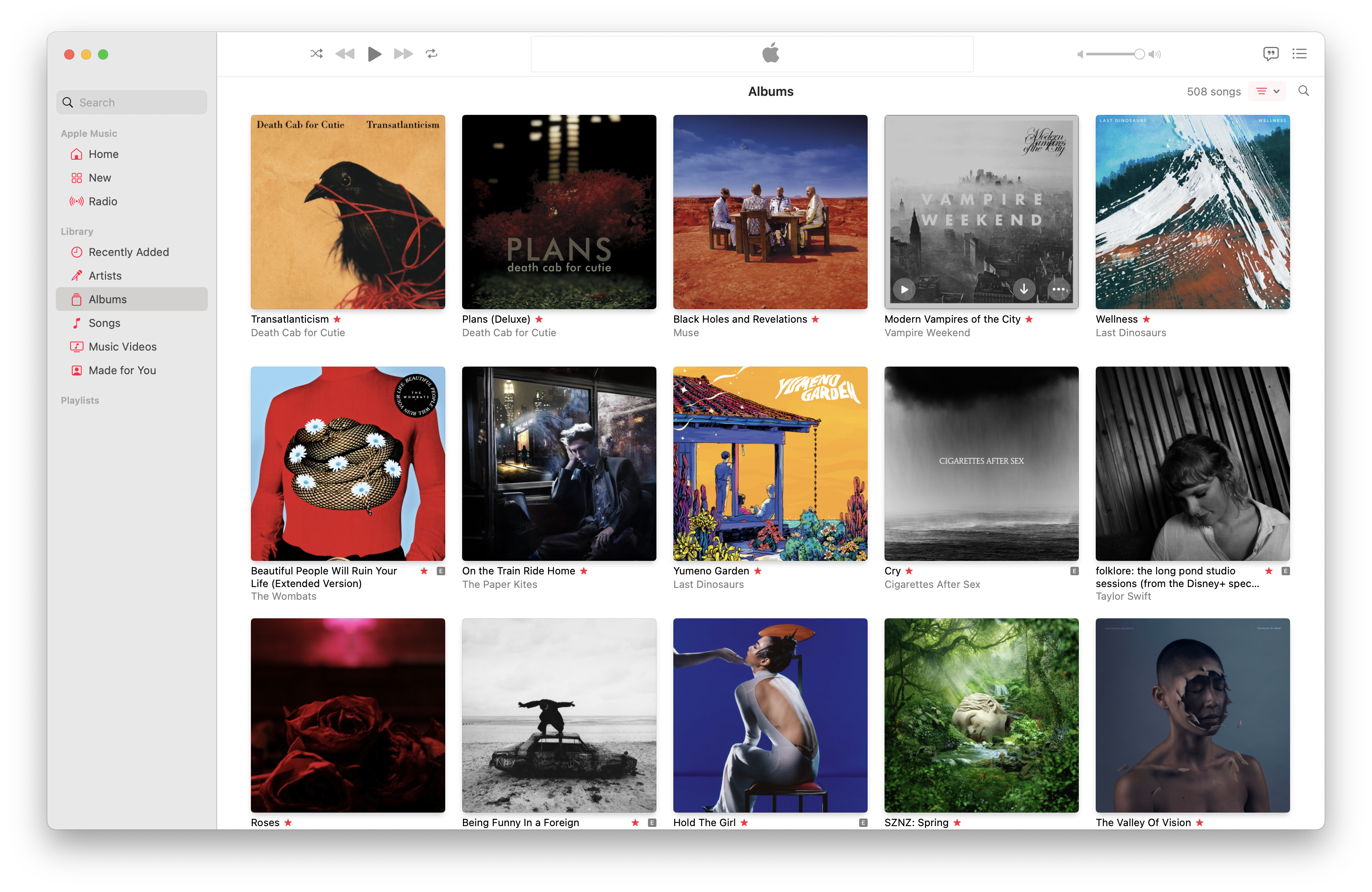
A screenshot of Apple Music showing a collection of albums. Sort order; unknown
I’d moved beyond embarrassment and reluctantly begun to accept that I was wired differently. Whereas musical confidence appeared to come naturally to everyone else. I didn’t know where to start. Is it possible that someone can have no taste in music at all. I don’t mean “bad” taste, but no taste.
Not willing to accept defeat, I set out to explore my relationship with music and how I went about listening. This is how I went from dreading questions about musical taste to feeling excited when sitting down to listen to an album and confident that there were alums I loved listening to.
I’ll leave you with two recommendations that meant something to me and leave you with one of my own.
Before
It felt like overnight that we went from cassette tapes to CDs, and minidiscs. As a child I went out of my way to tape songs off the radio, I spent countless hours trying to spice bits of audio together to achieve a talk over free version of Saturday Night by Whigfield. Then there was the library version of Bridge Over Troubled Water by Simon & Garfunkel that I ended up copying with a home made cabling inspired by a book from the same library. In the back of a pick-up on the roads of Cape Coast in Ghana, I spliced together two halves of a headphone cable to allow me to copy a MiniDisc version of Morcheeba’s Big Calm. The first CD I remember purchasing was Dreamland by Robert Miles after the track One and One managed to bridge the harsh realities of midi sound cards and the world of music. I’m not sure this is an album I’d listen to today. My journey to purchasing music ended almost as quickly as it had begun.
MP3s were a thing. I waited days for an mp3 copy of Gangstas Paradise by Coolio to download over a dial-up connection. I can remember where the computer was on a shelf in a makeshift living room as I watched the progress bar crawl slowly across the screen, hoping that no one would dare make a phone call before the download was complete. And then that bitter disappointment when I realised that whilst I had an mp3 file, the computer was incapable of playing it. I needed something called a sound cards which my parents didn’t deem necessary at the time. Software sound cards were a thing and I tried in vain to get the song to play through the internal speaker. The file itself was big enough that it wouldn’t fit on a single floppy disk. I was unable to take it to a friend’s place to listen. It was many months before I finally got to hear the song for the first time.
And then I went to university. A few people had dedicated mp3 players with hard disks containing hundreds of songs. Almost overnight people had file shares accessibly on the network with more songs than I knew what to do with. And, like many others, I took a shortcut to building a music collection, a shortcut that would deprive me of an opportunity to develop my own taste in music. Why make choices when you could have access to everything?
The era of unlimited access to music had arrived. Over time I erased the university era hard disks, replacing them with a Spotify subscription. Access to music was not only unlimited, it was legitimate.
But this early embrace of the unlimited catalogue came at a price. Whereas others around me had a music collection, I had a search box. But, whilst I could summon up music at will, it held no appeal. I had no idea what to type. I came to dread that search box.
With Spotify, albums were out and playlists were the new way to discover music. Increasingly put together by algorithms, these endless streams of music promised a new era of music discovery. As these playlists continued to push music they thought I’d like, my relationship with a track was boiled down to a simple question; like or dislike? Or was it love/hate? Favourite or skip?
This choice felt incomplete. How could my relationship with a song, an album, an artist be summarised with something as simple as a “like”? Music quickly became something that I put on in the background. Increasingly unable to recognise who I was listening to, let alone the name of the album, song or genre I lost all hope of developing a specific taste or identifying what I enjoyed.
When we visited friends and family, they’d put on a carefully curated playlist or a favourite album. When we had friends over, things were silent. Silent, not because I wanted silence, but silence because I didn’t know what to play.
I started to wonder, was this challenge unique to me or was it a side effect of having access to unlimited choice. I’d been handed an “easy” button. I’d become lazy in my listening.
Some Experiments
After reading The Information Diet: A Case for Conscious Consumption by Clay A. Johnson, I was inspired to try being more conscious with the media I consumed. At the time I was doing well with sources of news. I tend to avoid algorithmic sources of news and get the majority of my events from two major newspapers, both configured to prioritise local over global. I began to wonder if the same principles could be applied to other media that I consumed; the things I watch, or the things I listen to.
What would conscious consumption of music look like? I opened Spotify and started to scroll through my collection. I didn’t recognise anything. Where did this music come from? What did it mean to me? How did others make sense of this chaos?
I decided to experiment.
The more I thought about what it would take to re-discover music, the more my thoughts began to look like a graph database; an interconnected web of albums where the meaning was as much in the connections as it was in the nodes themselves. Having unlimited access to all1 music had filled my world with songs. The grouping of songs was ever changing and the connections between them invisible.
Focusing on albums felt like a good first step. Albums are a collection of tracks in a specific order as determined by the artist. By ignoring the album, I felt like I was missing out on this act of curation. The album gave me a unit to work with. Listening to an album felt like it was something I could do consciously.
Experiment 1 - The Album
Pick an album and listen to it through in order
I couldn’t find an easy way to add albums to my Spotify collection. I could create a playlist with songs from an album but it felt like the notion of an album was a second class experience on Spotify. I cancelled my subscription and moved over to Apple Music instead. Even here, the idea of having an album in your connection is frustratingly fluid. All too often the album title or edition will change and you end up with the tracks coming from different editions of the same album.
Result: By listening to full albums, I found myself listening to more music and listening for longer. I was more deliberate in my listening. 👍👍👍
Experiment 2 - Like/Love/Fave
Abandon Ratings
I’ve always struggled with ratings. With star ratings I find myself avoiding the top and bottom ratings, confining myself to 2, 3, or 4 stars I find the choice to be somewhat arbitrary. Any attempts to come up with rules for star ratings have quickly get lost in internal self-doubt about whether the rules I’ve chosen will cover all cases. At the other end of the spectrum, the idea of liking, loving, or favouriting is too limiting. My enjoyment of albums depends on context, mood, even the weather. Disliking an album felt like I was writing it off forever but the more I listened to albums, the more I realised that it was possible for an album to grow on me. I didn’t like it now, but it was an album that I wanted to re-visit. I needed a new system.
I came up with three labels:
- This is an album I want to keep.
- This is an album I don’t want to hear again. Not for me.
- This is one I’d like to re-visit.
As my curiosity grew, I started to ask another question after listening to an album; Do I want to try more albums by this artist?
Result: Thinking about an album in these categories comes far more naturally to me. But I feel like neither Apple Music nor Spotify lend themselves to categorising albums in this way. Mentally this was a step forward in my relationship with music, but I constantly feel like I’m fighting the tools. 👍
Experiment 3 - Forgotten Albums
A smart playlist to re-visit forgotten albums
I noticed that I tended to have a few albums on regular rotation. The others, no matter how much I enjoyed them, were now confined to the depths of my Apple Music library. I wanted a way to surface these albums and prevent albums I’d enjoyed from being lost forever.
SELECT * FROM 'tracks' WHERE 'play_count' > 25 AND 'last_played' > '60d' GROUP BY 'album_title' SORT RANDOM LIMIT 40;
Result: I like having this way to see a collection of forgotten albums but I noticed that I tended to default to this collection when looking for something to listen to. This meant newer albums never made the minimum play count. I’m not convinced I’ve nailed this view yet but it holds promise. 👍👎
Experiment 4 - The Backlog
Build a backlog of music to listen to
I want to build a music collection that means something to me. Focusing on albums rather than playlists was a huge step forward. But I needed a way to discover new music. Apple Music treats singles or albums as new if they were released recently. But something new for me could be an album that is decades old that I haven’t yet heard. It could be something I’ve heard but never made it to my collection. I needed a way to identify things to listen to and a way to manage them.
Sources:
- Album reviews in magazines/newspapers have been distinctly disappointing. They are all over the place with the occasional gem but the majority of duds. I’m looking in the wrong places I’m sure.
- Liner Notes, the chorus.fm newsletter by Jason Tate has been a goldmine of recommendations. Several recommendations haven’t hit the mark, but the hit ratio has been pretty high. If I’m not listening to albums that don’t click then I’m not being adventurous enough.
- Friend recommendations have been incredible. The majority of these have come from social media posts, but my absence from social media has meant these have all but dried up. I’ve turned to trawling the archives of personal blogs instead - one more reason personal blogs need to exist.
Result: I don’t have a reliable feed of new albums but I have ideas for where to get them. Low volume, high quality personal recommendations far outweigh the dedicated sources for new music. As for managing the backlog, I haven’t found a solution. 👎
Experiment 5 - Physical Media
Embrace the limitations of a physical music collection
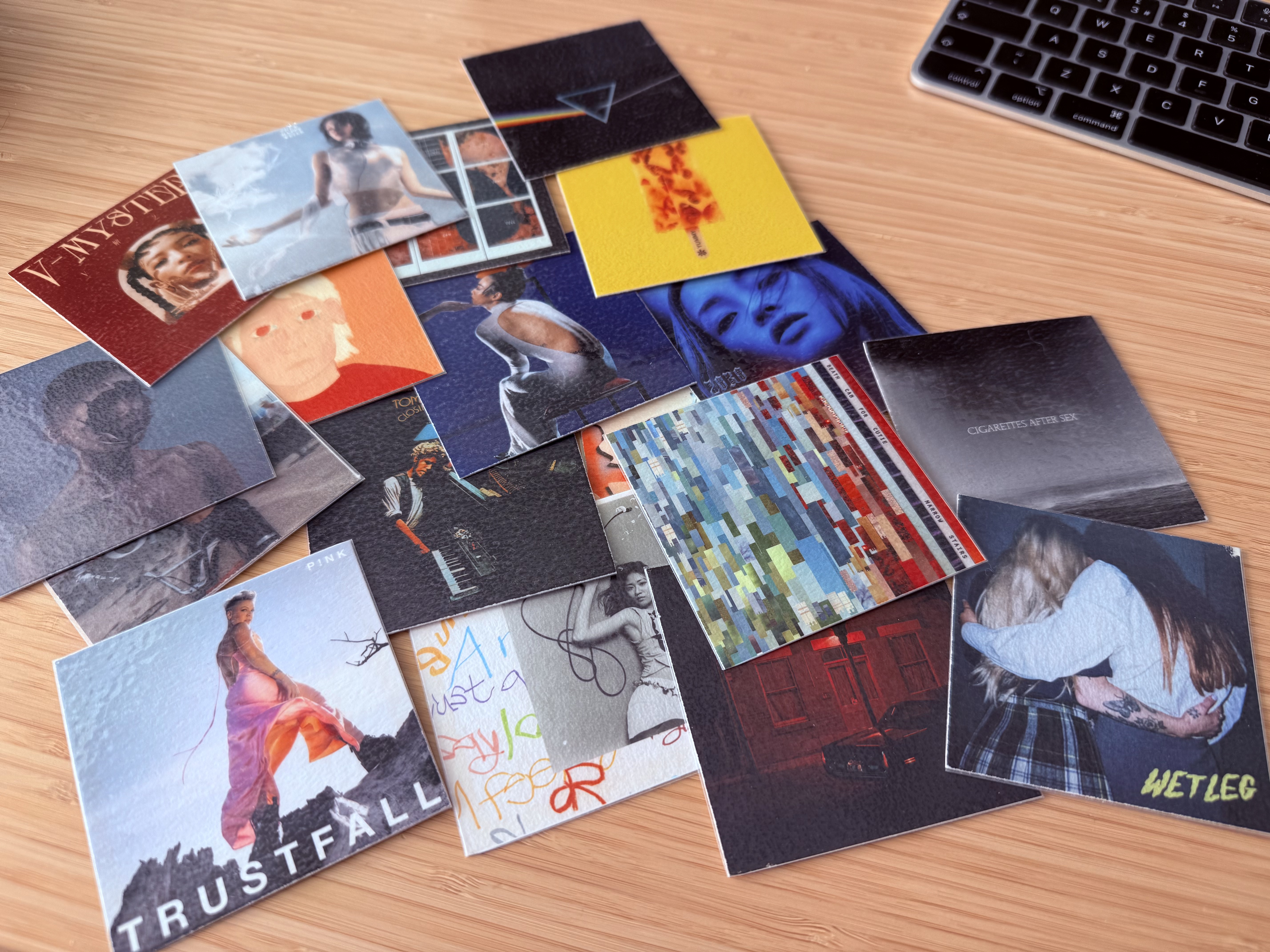
A collection of Oscar’s RFID album covers
I wanted to explore the idea of a physical music collection. I wanted to see if the experience of physical media would change the way I listen to music. There is an appeal to picking a physical album, appreciating the cover, listening and then importantly putting it away again.
But what physical media? There are two main choices available today, the CD or the vinyl record. I neither owned a turntable nor a CD player. I opened a collection of browser tabs and began research into the market for physical music.
In the meantime I built a small RFID based alternative. Oscar and I printed a series of small album covers that included RFID tags. When held up to a reader, the album was played on the nearest speaker. Take them away again and the album would stop.
We loved it. The independence this gave Oscar to choose and play music without having to ask us for a phone or a tablet was a delight to witness. Seeing the effect this had on him, I knew that this experiment was one to continue. I went back to my research.
Result: Switching to physical media has been a game changer for deliberate listening. I spent my recent birthday browsing 独音唱片, an Indie Music store in Beijing and loved it. I haven’t abandoned the idea of a digital music collection, or streaming but I think there is a special place at home for a physical collection. 👍👍👍
Breakthroughs
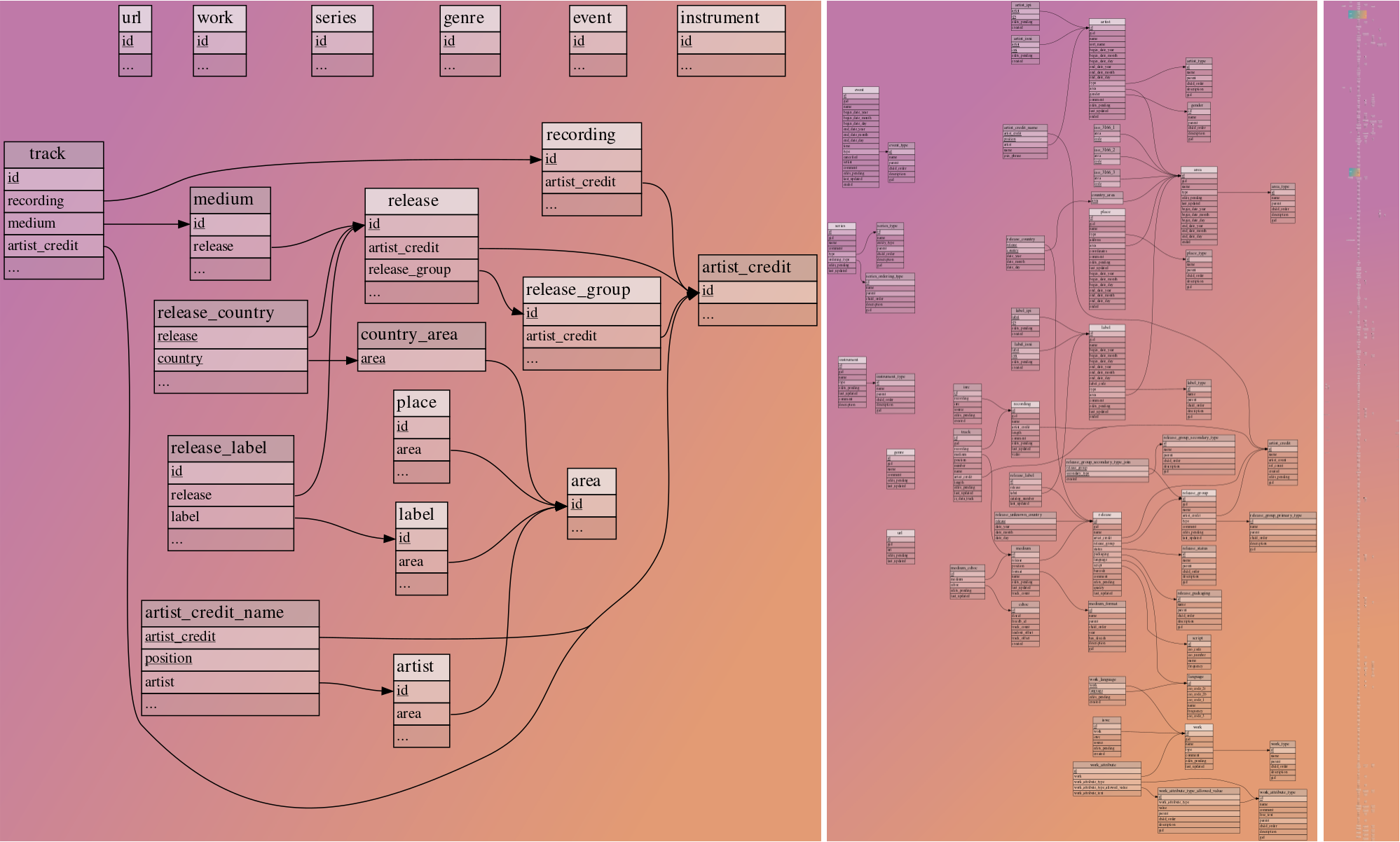
A screenshot of the MusicBrainz schema showing how unstructured music can be (source).
At times the inside of my head feels a lot like a structured database. I need to compartmentalise things, to build relationships between them, to label things. But music isn’t like this. Attempting to categorise or label music is much like learning a language. There are rules and conventions, but your relationship with it is deeply personal. That personality gives rise to exceptions, those albums you enjoy but don’t fit within the boundaries of a specific taste or style. Those exceptions break any attempt to apply a universal definition or categorisation. We don’t simply like or dislike music. Our relationship with an individual work evolves. As with any relationship, allowing it to develop takes time. Access to an unlimited music catalog with the emphasis on continuously evolving playlists removes any opportunity we have to develop that relationship.
By experimenting with the way I listen to music I’ve started to enjoy it more. I’m listening to more music than I ever did and above all, I’m more confident when talking about it.
As I’ve been on this journey, I’ve realised that recommendations from friends (intentional or otherwise) have carried far more weight than any algorithmically generated playlist. I’ve stopped talking in terms of favourites, instead asking people what the last album was that they played in full, or an album that means something special. I’ve abandoned the idea of defining my musical taste in terms of a style or genre.
I was fortunate enough to enjoy coffee with Georgie while she was in the UK. I’ve no idea how we ended up speaking about music, but our conversation has stuck with me. Georgie asked me if listening to music ever evoked certain memories. This was the moment it clicked for me. I do have a relationship with music. I was genuinely surprised to find that with many of the albums she mentioned, I was taken back to a specific point in time, a person or group of people or a feeling that remained unexplored. It struck me how this association with feeling was one of the major hurdles I had to enjoying music. When I sat down for coffee I had no idea that it would fundamentally change my relationship with music.
Recommended to Me
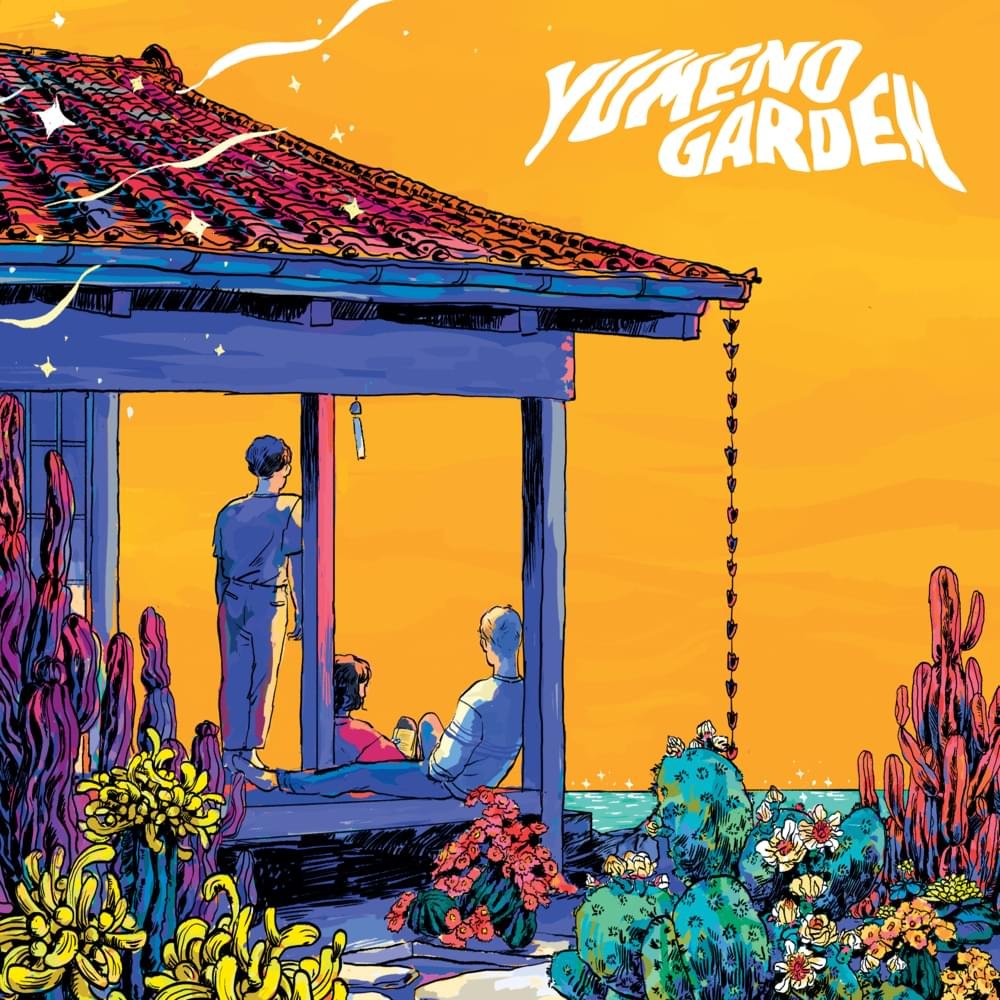
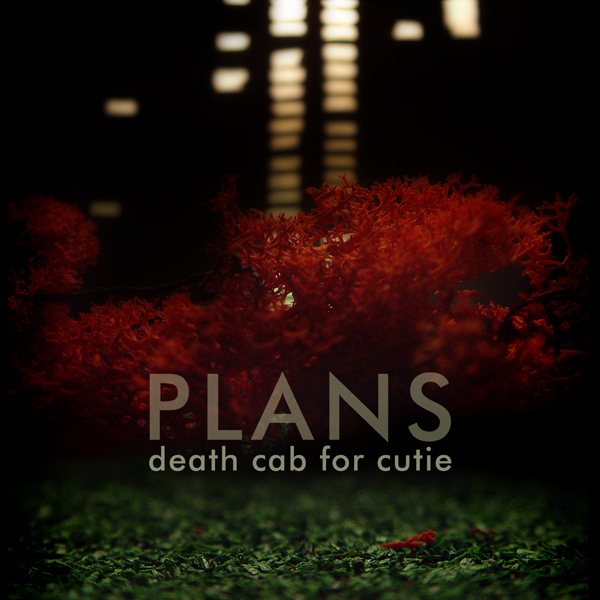
- 🎧 Last Dinosaurs, Yumeno Garden
- 🎧 Death Cab for Cutie, Plans
Thank you Georgie.
Recommendations for You
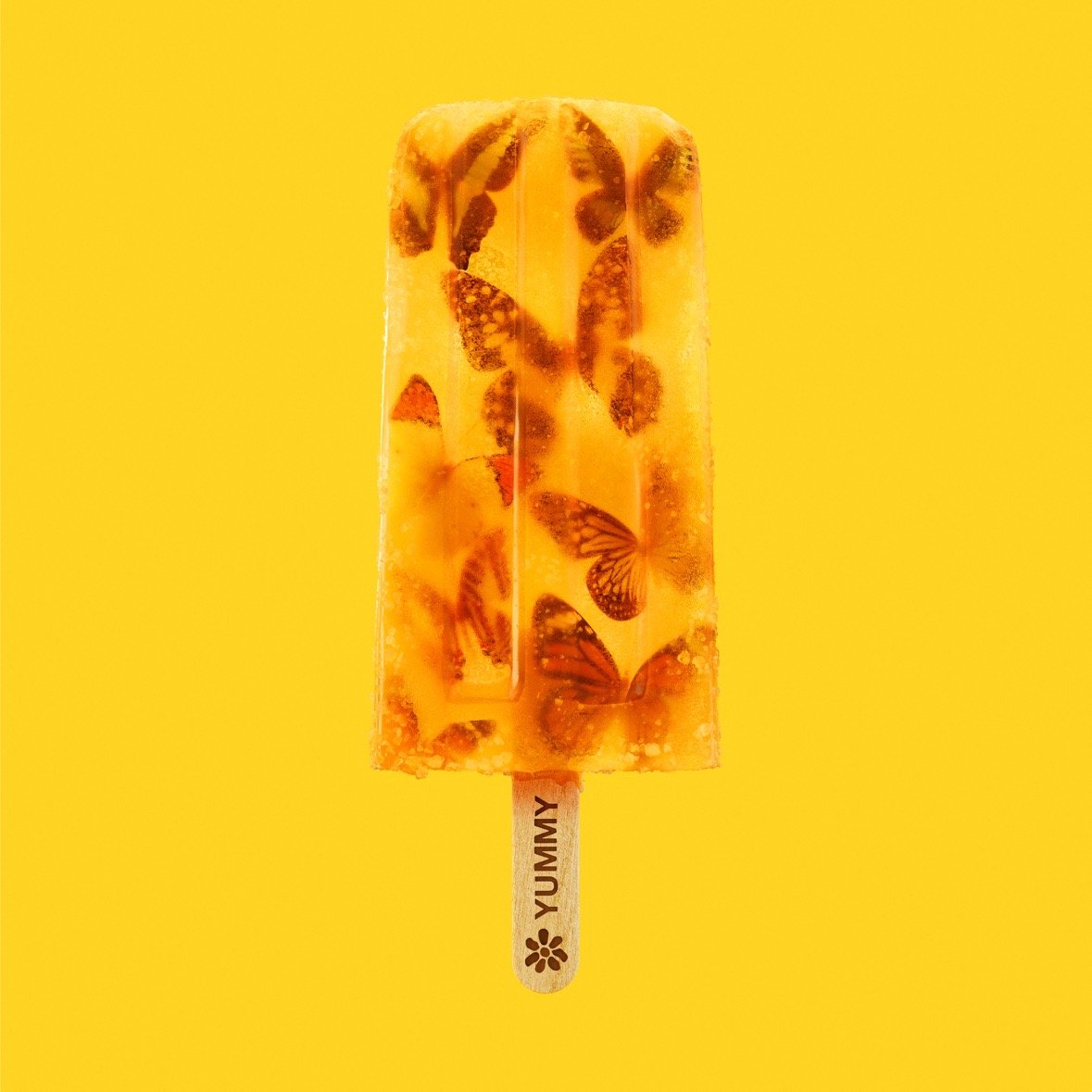
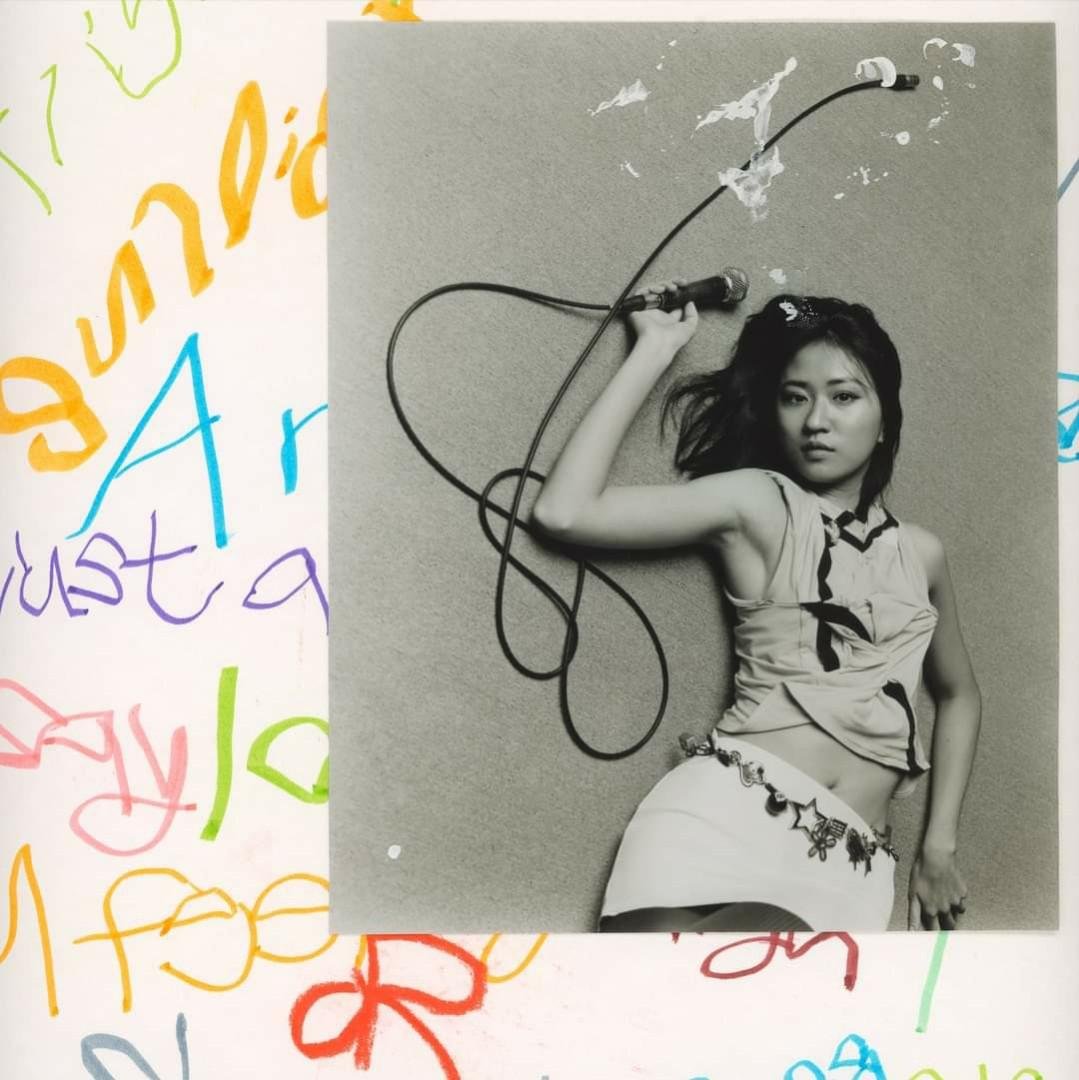
- 🎧 James, Yummy
- 🎧 9m88, 9m88 Radio
Where Next
The journey continues. My experiments with physical media will undoubtedly see me spending more time in the local record store.
- Continue to explore personal recommendations from friends
- Exploring the memories associated with albums and artists
- Using AI to explore the language of music
- Owning a personal collection in the age of streaming media
I don’t think I’ve ever said that I’d like to talk about music with anyone. But if you are on a similar journey or want to share in my excitement, I’d love to hear from you. I don’t have comments enabled on the blog but you can always email me. Album recommendations accompanied by a short story would make my day.
-
I’m aware that not all music is available on the streaming services. Watching albums vanish overnight prompted me to reconsider how I obtain media. A story for another blog post. ↩︎